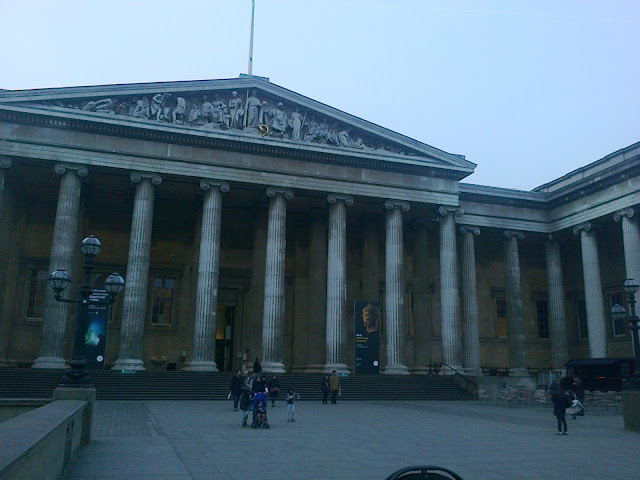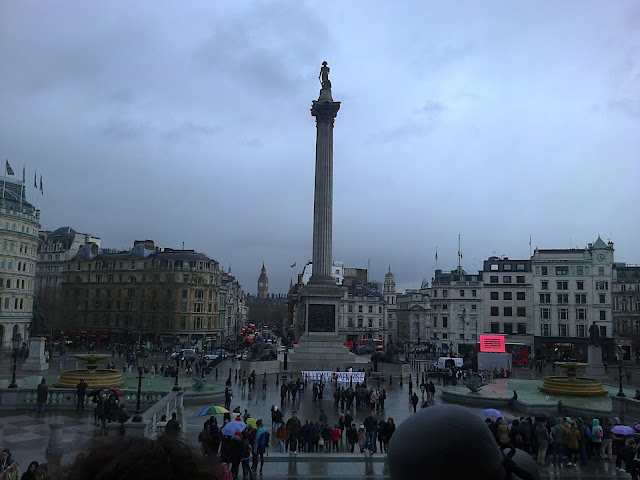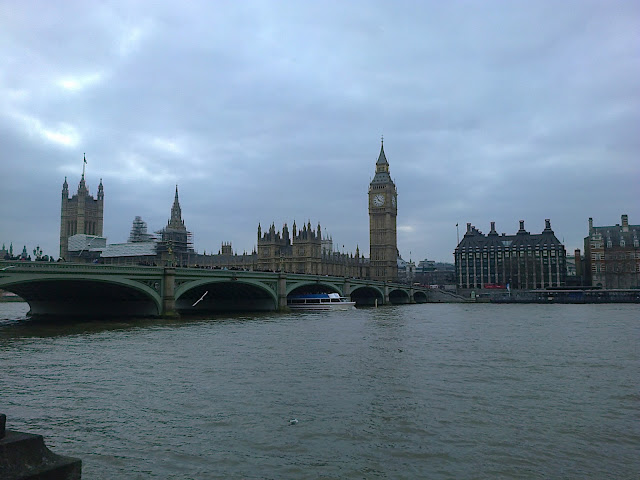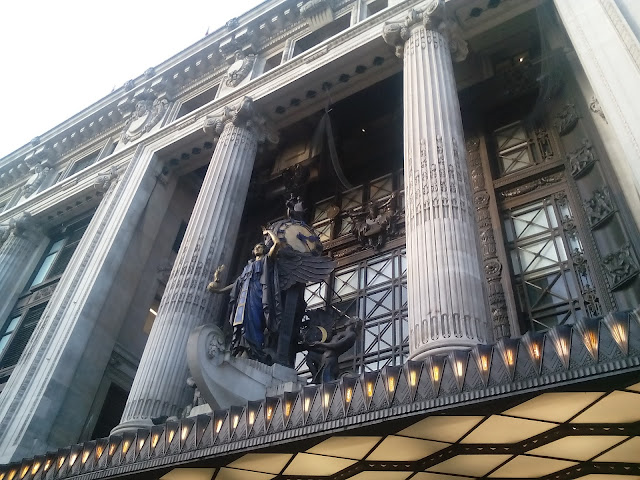The British Museum, London
12th March, 2016 @ The British Museum, London in the second part of my London Diaries is the place where ancient sculptures, obelisks, structures, artefacts and elements of historical, archaeological and anthropological importances come to life. Established in 1753 largely based on the collections of the physician and scientist Sir Hans Sloane, the museum currently holds some 8 million works which is among the largest and most comprehensive collections originating from all continents depicting the story of human cultures from its beginnings to the present.
The spacious Atrium known as 'The Queen Elizabeth II court'
The famous 'glass and steel' roof of the courtyard the view of which changes with every step
A Roman youth on horseback, 1st Century AD
The Great Egyptian Black siltstone obelisk of king Nectanebo II, 30th Dynasty, about 350 BCE
According to vertical inscriptions, Nectanebo set up this obelisk and its fellow (exhibited on the other side of the court) at the doorway of the sanctuary of Thoth, the twice great, Lord of Hermopolis.
Totem Pole of Kayung built by a Haida (Indian tribes of Kayung which is now a part of Canada)
The astonishing 39ft high cedar pole tells the story of a lazy son-in-law while the Haida house chief sits at the top holding a club.
Stone guardian figure
One of a pair, from north-east China, 17th century, late Ming or early Qing Dynasty
Such figures lined the spirit roads leading to tombs. These probably represent local officials from an area of China which included people from the Korean origin: they have Korean features and the boxes they carry are Korean in design.
Quartzite head of the Egyptian pharaoh Amenhotep III
Eighteenth Dynasty, About 1400 BCE, From Thebes
The head of the king is wearing the red crown of the lower Egypt. The style is typical of the sculpture of Amenhotep III especially in the treatment of the eyes, and foreshadows the artistic mannerisms of the Armana period at the end of the Eighteenth dynasty.
Head of the king Thutmose I (about 1504-1400 BCE)
The head comes from a colossal limestone statue that showed the king fully wrapped with his arms crossed on his chest in the manner of the god Osiris. His hand held looped crosses, emblems of life (ankh). The missing head of the cobra on the crown was fitted separately, perhaps as a repair. The king erected this and dozens of other statues in the temple of Amun-Ra at Karnak.
Osiride statue of Amenhotep I (about 1525-1504 BCE)
The king is shown in the pose, beard and robe of Osiris- the god of rebirth
The Goddess Sekhmet (about 1392-1352 BCE)
Granodiorite
Based on its size, style and exquisite workmanship, there can be no doubt that this statue was made during the reign of Amenhotep III, like the four Sekhmet statues above and many more. However, the only inscription it bears today, on the front sides of the throne, display cartouches with the throne and birth names of Sheshonq I, who founded the 22nd dynasty around 945 BCE. He lived at a time of less prosperity and the usurpation of earlier statues, both by royal and private individuals, was now a common practice.
The Goddess Sekhmet was a lion goddess whose name means 'the mighty one' and she personified the aggressive acts of other Goddesses. Sekhmet was the daughter of the Sun God Ra and she usually wears a sun-disc on her head.
Myth recounts how she almost obliterated humankind for conspiring against her father's rule. She was associated with destruction and plague, but her powers could also be invoked for healing. Like other goddesses she holds a looped cross and papyrus stalk; emblems of life (ankh) and flourishing (wadj).
Detached arm of a colossal statue of Amenhotep III
Colossal granite head of Amenhotep III
Terracotta and various clay potteries of Egyptian Dynasties
The hero Protesilaos, the first Greek warrior to land at Troy
Roman version of a Greek original dating to about 460-450 BCE
Found at Kyzikos, north west Turkey
The figure strides along a ship's prow. The head now lost was helmeted and the man held a spear in his raised right arm. There is a wound in his right armpit, just visible at the point where the arm has broken off- a reminder that Protesilaos was killed as his feet touched Asiatic soil.
The pediments of great temple of Parthenon also called Acropolis of Athens built between 447 and 432 BCE by the Great sculptor Phidias
Marble Metop (XXXI) from the south side of the Parthenon, showing a Lapith and a Centaur fighting. Centaurs were often used to depict enemies of Greeks such as the Persians.
The sculptures from the Indian subcontinent occupy a significant area as a part of the Asian gallery just near its Chinese counterpart.
The Mathura Lion Capital
Sandstone
Mathura, Uttar Pradesh
1st Century BCE/AD
This capital, a unique historical document is covered with Prakrit inscriptions in Kharoshti script, the form of writing of ancient Northwest India. Described amongst other donations is the gift of stupa with the relic of the Buddha by the queen Nadasi Kasa. She was the wife of satrap Rajuvula, various of her relatives are also named. The capital also displays at its centre a Buddhist triratna symbol, further confirming the involvement of Indo-scythian rulers with Buddhism.
A Roman youth on horseback, 1st Century AD
The Great Egyptian Black siltstone obelisk of king Nectanebo II, 30th Dynasty, about 350 BCE
According to vertical inscriptions, Nectanebo set up this obelisk and its fellow (exhibited on the other side of the court) at the doorway of the sanctuary of Thoth, the twice great, Lord of Hermopolis.
Totem Pole of Kayung built by a Haida (Indian tribes of Kayung which is now a part of Canada)
The astonishing 39ft high cedar pole tells the story of a lazy son-in-law while the Haida house chief sits at the top holding a club.
Stone guardian figure
One of a pair, from north-east China, 17th century, late Ming or early Qing Dynasty
Such figures lined the spirit roads leading to tombs. These probably represent local officials from an area of China which included people from the Korean origin: they have Korean features and the boxes they carry are Korean in design.
Quartzite head of the Egyptian pharaoh Amenhotep III
Eighteenth Dynasty, About 1400 BCE, From Thebes
The head of the king is wearing the red crown of the lower Egypt. The style is typical of the sculpture of Amenhotep III especially in the treatment of the eyes, and foreshadows the artistic mannerisms of the Armana period at the end of the Eighteenth dynasty.
Head of the king Thutmose I (about 1504-1400 BCE)
The head comes from a colossal limestone statue that showed the king fully wrapped with his arms crossed on his chest in the manner of the god Osiris. His hand held looped crosses, emblems of life (ankh). The missing head of the cobra on the crown was fitted separately, perhaps as a repair. The king erected this and dozens of other statues in the temple of Amun-Ra at Karnak.
Osiride statue of Amenhotep I (about 1525-1504 BCE)
The king is shown in the pose, beard and robe of Osiris- the god of rebirth
The Goddess Sekhmet (about 1392-1352 BCE)
Granodiorite
Based on its size, style and exquisite workmanship, there can be no doubt that this statue was made during the reign of Amenhotep III, like the four Sekhmet statues above and many more. However, the only inscription it bears today, on the front sides of the throne, display cartouches with the throne and birth names of Sheshonq I, who founded the 22nd dynasty around 945 BCE. He lived at a time of less prosperity and the usurpation of earlier statues, both by royal and private individuals, was now a common practice.
The Goddess Sekhmet was a lion goddess whose name means 'the mighty one' and she personified the aggressive acts of other Goddesses. Sekhmet was the daughter of the Sun God Ra and she usually wears a sun-disc on her head.
Myth recounts how she almost obliterated humankind for conspiring against her father's rule. She was associated with destruction and plague, but her powers could also be invoked for healing. Like other goddesses she holds a looped cross and papyrus stalk; emblems of life (ankh) and flourishing (wadj).
Detached arm of a colossal statue of Amenhotep III
Colossal granite head of Amenhotep III
Terracotta and various clay potteries of Egyptian Dynasties
The hero Protesilaos, the first Greek warrior to land at Troy
Roman version of a Greek original dating to about 460-450 BCE
Found at Kyzikos, north west Turkey
The figure strides along a ship's prow. The head now lost was helmeted and the man held a spear in his raised right arm. There is a wound in his right armpit, just visible at the point where the arm has broken off- a reminder that Protesilaos was killed as his feet touched Asiatic soil.
The pediments of great temple of Parthenon also called Acropolis of Athens built between 447 and 432 BCE by the Great sculptor Phidias
Marble Metop (XXXI) from the south side of the Parthenon, showing a Lapith and a Centaur fighting. Centaurs were often used to depict enemies of Greeks such as the Persians.
The sculptures from the Indian subcontinent occupy a significant area as a part of the Asian gallery just near its Chinese counterpart.
The Mathura Lion Capital
Sandstone
Mathura, Uttar Pradesh
1st Century BCE/AD
This capital, a unique historical document is covered with Prakrit inscriptions in Kharoshti script, the form of writing of ancient Northwest India. Described amongst other donations is the gift of stupa with the relic of the Buddha by the queen Nadasi Kasa. She was the wife of satrap Rajuvula, various of her relatives are also named. The capital also displays at its centre a Buddhist triratna symbol, further confirming the involvement of Indo-scythian rulers with Buddhism.
Bronze
10th Century AD
Tamil Nadu
Linga- Black Sandstone linga on a circular base with a long tapering spout. A serpent partly recoils round the linga and has its head resting at the top. The lower portion is unfinished which suggests that the piece was originally set on the floor of a temple.
South India
18th Century
The Buddha
Sarnath, Uttar Pradesh
About 5th-6th Century AD
Sarnath, near Varanasi (Benares) on the Ganges river, is the place where the Buddha preached his First sermon following his enlightenment. An important school of sculpture develped in Sarnath during the Gupta empire (4th-6th Century AD) which was later to influence sculptural styles throughout India and South-east Asia.
Shiva Nataraja
Bronze
South India, AD1100
Maitreya Buddha
Grey Schist
Gandhara (Northern Pakistan)
2nd-3rd Century AD
Left: Harihara Vishnu and Shiva combined
Chandella Dynasty
Central India
10th Century AD
Right: Vishnu Kanauj
Central India
10th Century AD
Saraswati- Although she is better known as a Hindu goddess, Saraswati's cult is equally popular among the Jains. Since knowledge (jnana) plays a fundamental role in Jain religion as a means to salvation, this goddess has an important place in their pantheon. She features frequently in the vast Jain libraries filled with painted manuscripts that have been found in Western India.
Marble
Western India
1050-1099 AD
Tirthankaras Rishabhadeva and Mahavira
Metamorphic Rock
Orissa, 11th-12th Century AD
The Matsya (fish incarnation) of Vishnu
Central india
9th-10th Century AD
Shiva and Parvati also known as Umamaheshwaramurti. Accompanied by a lion and bull (Nandi) and surrounded by many flying and standing attendants. There is also a row of ritual equipment: two conch-shell trumpets on stands, a lamp and a bell.
Black Sandstone
13th Century
Kalinga (Orissa), India
Male Dancer
South India, Kerala
Chera, 12th Century AD or later
The temples of Kerala are often made by wood and are characterised by high pitched or conical roofs and elaborate carved decorations. This wooden dancer, with the high relief decoration and prominent eyes typical of Keralese scripture at all periods, comes from a temple and performs in honour of the god. Its surface has suffered damage from being constantly subject to rainwater.
Right: Vishnu
Kashmir, about AD 800
Left: Single faced stone linga
Kashmir, 7th-8th Century AD
South India: Regions and materials
The Kerala coast is geographically, politically and climatically separated from the rest of South India. A distinctive bronze casting tradition named after the Chera kings (AD 700-850) is part of this different culture. The use of wood for temples often, circular is typical.
Secular architecture in Kerala has also been constructed in wood until recent times. Palaces in Cochin(17th Century) and Padmanabhapuram(18th Century), with their sequences of magnificent mural paintings, provide a further example of regional variation in southern India.
The south is also renowned for ivory carving and in the Nayaka and Maratha periods(17th-18th Century) decorative plaques for thrones, as well as images of gods were produced in abundance.
We had barely finished the Indian Gallery when the museum closing timings were announced and the staff guided us towards the exit. Still lot more was left to be seen- the Chinese, Japanese, Russian, African, Arabian and many more demo-graphical and cultural works of art.
The museum building itself is a classical architectural marvel.
The majestic British Museum- A place where history comes alive!


























































Comments
Post a Comment